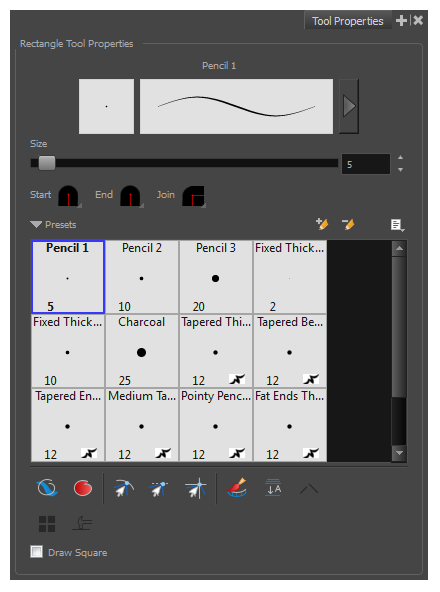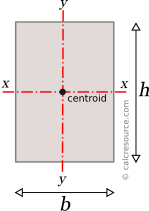
The elastic modulus S_x of any cross section around axis x (centroidal), describes the response of the section under elastic flexural bending. Where the I_x and I_y are the moments of inertia around axes x and y, which are mutually perpendicular with z and meet at a common origin. The calculation of the polar moment of inertia I_z around an axis z (that is perpendicular to the section plane), can be done with the Perpendicular Axes Theorem: The polar moment of inertia, describes the rigidity of a cross-section against torsional moments, likewise the planar moments of inertia, described above, are related to flexural bending. The dimensions of moment of inertia are ^4. Therefore, it can be seen from the former equation, that when a certain bending moment M is applied to a beam cross-section, the resulting curvature is reversely proportional to the moment of inertia I. Where E is the Young's modulus, a property of the material, and \kappa the curvature of the beam due to the applied load. The bending moment M, applied to a cross-section, is related with its moment of inertia with the following equation: The moment of inertia (second moment or area) is used in beam theory to describe the rigidity of a beam against flexure. Let's start by defining a book class to use in our invoice.The area A and the perimeter P of a rectangular cross-section, with sides b and h, can be found with the next formulas:
#Section properties of a rectangle code#
We will look at the code for a simple bookstore invoice program as an example. Then we will talk about some ways to fix them. In this section we will look at some common mistakes that violate the Single Responsibility Principle. But if the SRP is followed, fewer conflicts will appear – files will have a single reason to change, and conflicts that do exist will be easier to resolve. They appear when different teams change the same file. By following the SRP, we will know that it is related to storage or database-related stuff. For example, say we have a persistence class that handles database operations, and we see a change in that file in the GitHub commits. First of all, because many different teams can work on the same project and edit the same class for different reasons, this could lead to incompatible modules. This means that if a class is a data container, like a Book class or a Student class, and it has some fields regarding that entity, it should change only when we change the data model.įollowing the Single Responsibility Principle is important. To state this principle more technically: Only one potential change (database logic, logging logic, and so on.) in the software’s specification should be able to affect the specification of the class. The Single Responsibility Principle states that a class should do one thing and therefore it should have only a single reason to change. They all serve the same purpose: "To create understandable, readable, and testable code that many developers can collaboratively work on." Therefore, it is not a surprise that all these concepts of clean coding, object-oriented architecture, and design patterns are somehow connected and complementary to each other. Uncle Bob is also the author of bestselling books Clean Code and Clean Architecture, and is one of the participants of the "Agile Alliance". But the SOLID acronym was introduced later by Michael Feathers.

Martin (a.k.a Uncle Bob) in his paper in 2000. The SOLID principles were first introduced by the famous Computer Scientist Robert J. So grab a cup of coffee or tea and let's jump right in! Background Then we are going to get into the nitty-gritty details – the why's and how's of each principle – by creating a class design and improving it step by step. We will start by taking a look into the history of this term. This article will teach you everything you need to know to apply SOLID principles to your projects.

So I believe that it is a topic that every developer should learn.
#Section properties of a rectangle software#
These five principles help us understand the need for certain design patterns and software architecture in general. They are a set of rules and best practices to follow while designing a class structure. The SOLID Principles are five principles of Object-Oriented class design.


 0 kommentar(er)
0 kommentar(er)
